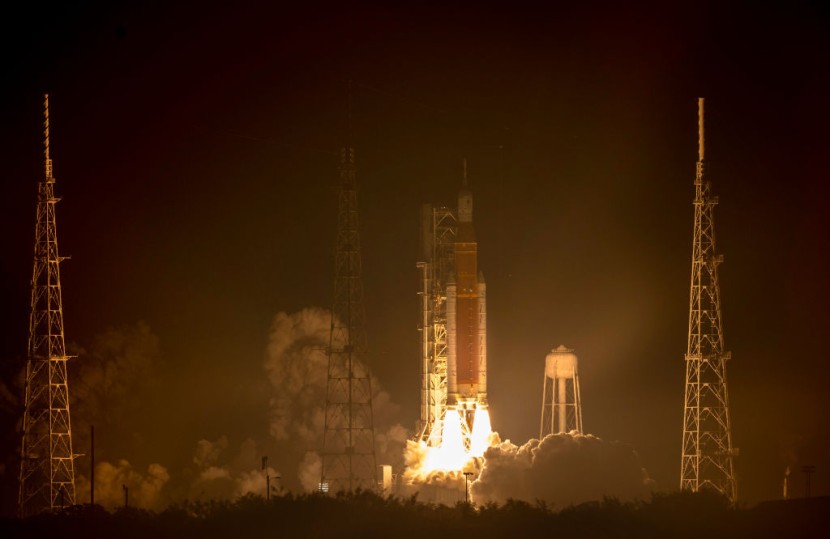
Following months of anticipation, the historic Artemis I mission launched early on Wednesday. The event sent an uncrewed spacecraft around the moon, opening the way for NASA to transport people to the lunar surface for the first time in fifty years.
At 1:47 a.m. ET, the Space Launch System, or SLS, rocket ignited its powerful 322-foot-tall (98-meter-tall) engines. It lifted off from a pad in Florida with a burst of up to 9 million pounds (4.1 million kg) of force and blazed brightly throughout the night sky, as reported by CNN.
The Orion capsule, resembling a gumdrop, rode atop the rocket and separated from it after it had reached orbit.
Orion is built to transport people, but on this test flight, it is carrying inanimate objects, including mannequins that are gathering crucial information for future human crews.
Millions of pounds of fuel were burned in the SLS rocket before it began to fail, leaving Orion to soar into space with a single massive engine. The spaceship's engine then initiated two massive burns to adjust its course toward the moon.
About two hours after takeoff, Orion's rocket engine also detached, allowing the spacecraft to fly autonomously for the rest of its voyage. Orion completed its outbound course adjustment burn, a crucial mission step that guarantees the spacecraft maintains its course, about eight hours after launch.
A Milestone in Space Exploration History
In December, NASA will commemorate 50 years since Apollo 17, the final mission to land humans on the Moon. The new NASA initiative is being given the name Artemis, after Apollo's mythological sister, per BBC.
Over the following decade, the organization plans to carry out a succession of more complicated missions that will lead to a more permanent human presence on Earth's satellite through the use of dwellings on the surface, rovers, and even a space station in the lunar orbit.
Depending on how successfully Artemis 1 goes, Artemis 2 will send people on a lunar flight in 2024 or thereabouts, and Artemis 3 would land a crew near the south pole of the moon a year or so later, as per Space.com.
From there, NASA's Artemis program will continue with its primary objective of establishing a permanent human settlement on and around the moon. Orion is set to return to earth on December 11 via a parachuted descent to the Pacific Ocean.
How To Keep Track With The Artemis I Mission?
In the first-ever fully-integrated flight test of the Space Launch System (SLS) rocket, Artemis 1 will send Orion on a mission to a distance of 40 thousand miles beyond the moon.
Almost anybody with an internet connection may use AROW to follow Orion's location, distance from earth and the moon, mission duration, and more, according to NASA's official website. The public can access AROW on the NASA homepage and the @NASA Orion Twitter account.
While #Artemis I is uncrewed, a manikin named "Commander Moonikin Campos" is among the test devices flying aboard @NASA_Orion. The name honors NASA engineer Arturo Campos, who helped bring the Apollo 13 crew safely home to Earth. https://t.co/B5x3fSQQ74 pic.twitter.com/2gs2eC7pWi
— NASA (@NASA) November 16, 2022
During Orion's flight, sensors onboard capture data, which is then transmitted to the Mission Control Center at NASA's Johnson Space Center in Houston, where it is visualized using AROW.
Starting about a minute after launch and continuing until the SLS rocket's Interim Cryogenic Propulsion Stage separates, almost two hours into the flight, it will send periodic real-time data. When Orion is in independent flight, AROW will send continuous real-time updates.
Related Article : NASA Astronauts Complete Spacewalk in Preparation for Installation of Solar Array Upgrades








